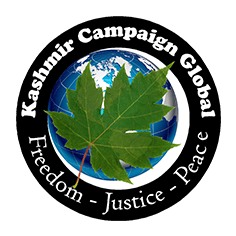In Kashmir, there have been more than 8000 cases of enforced and involuntary disappearances between 1989 and 2009, according to the Association of Parents of Disappeared Persons (APDP), a collective of family members who campaign against enforced disappearances and are in search of their loved ones. According to the Rome Statute of the International Criminal Court, when an enforced disappearance is committed as part of a widespread or systematic attack directed at any civilian population, it qualifies as a crime against humanity, depriving an individual of their fundamental rights. Enforced disappearance violates an individual’s right to liberty, right to freedom from torture, right to a fair trial, right to equal protection and right to presumption of innocence.
Families of those who have been subjected to enforced disappearances also suffer economically because in most cases, the breadwinner of the family is targeted. Wives and children of the disappeared especially suffer from mental health conditions caused by uncertainty around the victims’ whereabouts and their own future. The wives of the disappeared persons, referred to as ‘half-widows’, are exempted from state welfare schemes such as the widow pension scheme. At the same time, they are also excluded from the ownership of property by patriarchal customs in South Asia, including dominant interpretations of Islamic law that mandate that a woman gets her share of the property only when her husband is declared dead.
In the absence of a law, families often lodge “missing persons” complaints with the police to trace those who might have been subjected to enforced disappearance. The crime categorizations commonly used in the record books include “abduction”, “kidnapping” or “wrongful confinement”. To top that, controversial laws like the Armed Forces (Jammu & Kashmir) Special Powers Act of 1990 (AFSPA), the Disturbed Areas Act of 1976 which was extended to Jammu and Kashmir in 1992, the Jammu and Kashmir Public Safety Act of 1978 and Unlawful Activities (Prevention) Act of 1967 grant impunity to more than 900,000 personnel of the Indian armed forces. While the presence of armed forces in popular culture is associated with a sense of safety, in Kashmir, armed personnel create an environment of fear and insecurity.
In November 2017, the SHRC once again asked the Jammu & Kashmir government to investigate at least 2,080 unmarked mass graves, this time in the Poonch and Rajouri districts of Jammu. But there has neither been a probe nor an Action Taken Report from the government. The state’s inaction prompted the JKCCS to file a petition in the SHRC in August this year, asking the SHRC to approach the High Court to seek implementation of its 2011 and 2017 orders.
The United Nations adopted the International Convention for the Protection of All Persons from Enforced Disappearance in 2006 as a legally binding instrument to prevent enforced disappearances. Although India has been a signatory to the convention since 2007, it has not ratified it even now, 11 years later. The Prevention of Enforced Disappearances Bill, 2017 was introduced in the Rajya Sabha in December 2017.
The government pegs the number of enforced disappearances at 4,000. This discrepancy in the number of enforced disappearances has been highlighted by the Office of the UN High Commissioner for Human Rights (OHCHR) in its first-ever report on the status of human rights in Kashmir released in June 2018. However, the Indian government rejected the report. “Enforced disappearances are a weapon of war. They are used to neutralize armed resistance against the state and their sympathizers. It is a global problem and not restricted to a specific region. Disappearances not only silence opponents but also create uncertainty and fear in the wider community.
The SHRC finally agreed to an inquiry. Soon, it had its work cut out. Using RTI laws, the police were forced to concede that they had lodged 2,683 cases for the covertly interred in just three districts. And a new deposition submitted for the district of Rajoori and Poonch, mapped 3,844 more unmarked and mass graves, taking the total number to more than 6,000. There are still another 16 districts yet to be surveyed properly making us wonder how many violent deaths and surreptitious burials have been concealed across Kashmir.
The government’s initial refusal to comply with the SHRC’s recommendations gives impunity to and protects the perpetrators of violence. It also reflects the state’s reluctance to acknowledge the very existence of enforced disappearances, a culpable offence. For thousands of families looking for closure and justice, such a response from the state only aggravates their grief. It further deepens the sense of distrust for generations of Kashmiris who live in the constant fear of being raped, murdered or tortured for speaking up against the oppression and impunity and what many in Kashmir would say ‘occupation of the region’. It is time for the state to hold the armed forces accountable, repeal laws that give them impunity, and investigate the mass graves as ordered by the State Human Rights Commission.
August 30 marks the International Day of the Victims of Enforced Disappearances. According to the United Nations, an enforced disappearance occurs when people are arrested, detained or abducted against their will by the state, or groups and individuals acting on behalf of, with support from the state; followed by a refusal to disclose the whereabouts of the person.

